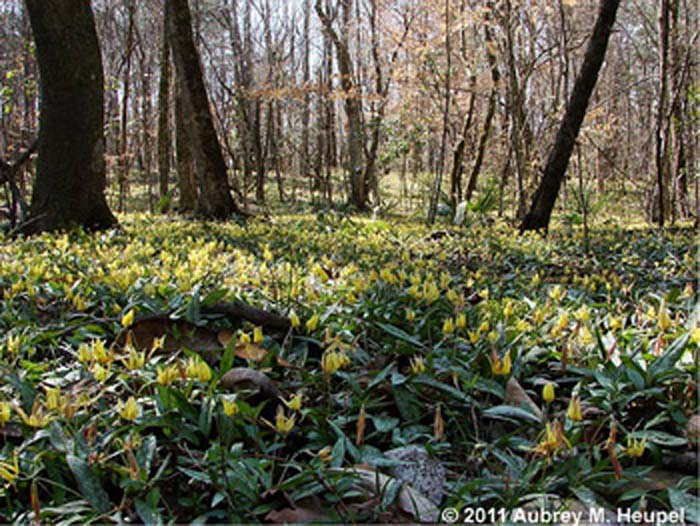Trout lilies starting to bloom
Published 12:52 pm Thursday, February 13, 2014

- Wolf Creek Trout Lily Preserve is a 140-acre conservation area owned by Grady County through many generous private donations and a grant from the Georgia Land Conservation Program.
Staff report
It may be hard to imagine tens of millions of bright yellow flowers carpeting undulating slopes in a shady forest, but you can see it for yourself in Grady County.
Wolf Creek Trout Lily Preserve is a 140-acre conservation area owned by Grady County through many generous private donations and a grant from the Georgia Land Conservation Program. Established in 2009 through the efforts of volunteers from the Magnolia Chapter (Tallahassee, Fla.) of the Florida Native Plant Society (including some Georgians), it is destined to remain forever undisturbed from human development, protecting the many acres and literally tens of millions of dimpled trout lilies and thousands of maroon spotted trillium. This is the largest extent of these trout lilies known anywhere in the world.
How did these plants come to be there? They are usually found in the Appalachian mountains. The theory is that they migrated from the mountains probably tens of thousands of years ago. When the last ice age receded they were left in some spots in southwest Georgia and north Florida, east of the Chattahoochee, Flint and Apalachicola rivers. Apparently the Wolf Creek spot is just right for them — a north facing slope of just the right angle, a hardwood forest with dappled sunlight in the winter, soils of just the right type and depth before underlying clay.
Guided tours have been scheduled and visitors are welcome. The gate will be left open throughout the bloom.
Each trout lily flower opens in early afternoon, follows the sun and closes at dusk, so visitors should only go in the afternoons to see the open flowers.
If it is raining heavily or very dark and cloudy in the morning, the flowers may stay closed into the afternoon, but if the sun comes out later in the afternoon, they may open then. Each individual flower re-opens for several days, with overall numbers of flowers in bloom beginning gradually, increasing, peaking, then declining over the course of a few weeks. Depending on the winter weather the overall bloom may be anywhere from two to four weeks long.
The trout lilies grow on a slope, so visitors need to wear boots or shoes with treads that may get damp or muddy and bring a walking stick if desired. Unfortunately there is no access for people with limited mobility. Cameras are highly recommended! You may want to bring a hand lens or magnifying glass to see the tiny twayblade orchids or details of other flowers. Please do not bring dogs or other animals. There are no bathroom facilities.
To find the preserve, take U.S. Highway 84 five miles west of Cairo to Wolf Creek Road, turn left, and look for the first gate on your left. There is a small parking area inside the gate, with other parking alongside the road. Visitors are asked to sign in at the mailbox, where there are brochures with maps. Then proceed downhill to the left. For a short walk to the best views, go straight on the wide downhill trail and come back the same way. Other trails are marked for those who want to enjoy a longer walk.
TOUR SCHEDULE
Tour schedule
Friday, 2 p.m. and 4 p.m. — Beth Grant (Thomasville), student naturalist, volunteer leader and board member of Florida Native Plant Society, Magnolia Chapter
Saturday, 1 p.m. and 3 p.m. — Wilson Baker, field biologist, member FNPS
4 p.m. — Beth Grant
Sunday, 2 p.m. — Beth Grant
3 p.m. — Dan Miller, founder of Wolf Creek Trout Lily Preserve, Trillium Gardens (native plant wholesale nursery); member FNPS
4 p.m. — Beth Grant





